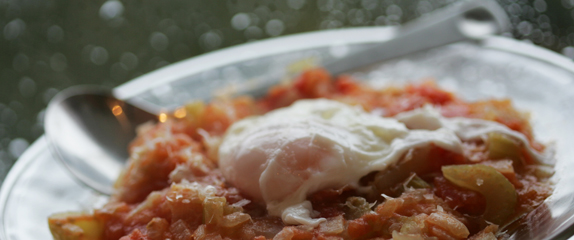Load up your plate with regional Italian delicacies at a ‘sagra’
MAGLIANO, Italy – There you are, dining al fresco on a warm summer’s eve in the Italian countryside. Plates of the ”gastronomia tipica” (local dish) are splayed out before you, and a pitcher of hearty wine is being passed your way. You are engulfed in a lively, informal atmosphere. The flow of food and conversation is constant. Friends and family greet one another with kisses on both cheeks and refrains of ”Ciao, Ciao.” The aroma of grilled meats fills the air. And you know the bill will be incredibly inexpensive.
This is an Italian ”sagra, ” one of the traditional regional food festivals that take place in villages all over Italy, especially in the summer. You will find no better way to experience local Italian cuisine short of
having your own ”nonna” (grandmother) in the kitchen.
Sagras are sponsored by community groups, parishes, town governments, or political parties, and all proceeds go to a local project, such as fixing the library or resurfacing the soccer field. These festivals can last from three days to a month, depending on the village. There is no need for reservations or dressing up if you want to go sagra hopping, but bring a car and a sense of adventure.
A sagra is like a giant block party or church supper. All the cooking is done by adults who volunteer, the wait staff is made up of enthusiastic local youths, and the food and wine comes from the town’s butchers, bakers, farmers, and vintners. The long tables are covered with paper, the dinnerware is plastic, and grills and rotisseries are usually working at capacity to churn out aromatic rosemary-flavored roast chickens, mouthwatering sausages, and cuts of pork or beef.
But that is just the half of it. Sagras are meant to highlight a local delicacy: ”aquacotta” (bread soup), ”baccala” (salted cod), polenta, ”cinghiale” (wild boar), ”fagioli” (beans), or ”funghi” (mushrooms); there is even one that showcases ”rane” (frogs).
Then there are all the options for pastas and side dishes. After you review a posted menu, the townies write down your choices and take your euros (cash only). An Italian food dictionary and a paper and pencil are helpful, but there are bound to be plenty of folks there who speak some English. In any case,
this is Italy, so you can’t go wrong with your selections, and at these prices (main dishes are usually $4-$7), you wouldn’t care much if you did.
With a few exceptions, the sagras are held outdoors, at a town soccer field or just off the main piazza. Large extended families fill tables. Children are urged to eat, and teenagers check out other teenagers. Some sagras provide entertainment with local talent or carnival rides. When the children are finished, they play nearby. The adults are left to polish off another pitcher of wine and watch the night sky begin to sparkle.
Signs announcing the dates and featured foods of the sagras dot roadways and are posted on stone walls in and around towns. Even if you cannot read Italian, it is easy to muddle through a local paper’s list of events.
Last August, we stayed in a house in the tiny town of Magliano, about two hours north of Rome in the southwest region of Tuscany known as the Maremma. The Maremma has it all but without the crowds: Etruscan ruins, the Tyrrhenian Sea to the west, and dramatic hilltop towns inland. Tourists here are mainly Italians and other Europeans.
Magliano holds a monthlong sagra just off the main square under a tent that highlights the local aquacotta. Walk through the one main street of this medieval town and pass a sprinkling of shops. Wander through the piazza, bordered by the church. By the time you reach the end of the street, the smells of roasting meats and the magnetic sound of laughter draw you to the tent. Here is the ”Sagra dell’ Aquacotta.”
It always takes Americans awhile to adjust to the Italian dining schedule: We would arrive at the tent at 7 p.m., which is way too early, when not even 5-year-olds would eat (Italians generally start eating after 8).
After perusing the menu, we take a seat at a table, where a patient elderly man takes our order: Bread soup, ”salsicce” (sausages), half a roasted chicken, marinated white beans, and a pitcher of local sangiovese red wine. At under $20, a feast for a pittance.
A handsome boy of 12, tanned and earnest, showed up moments after we were seated, his eyes fixed on the glasses, wine, and bread balanced on the tray he was carrying. ”Prego,” he said, with the pride of a youngster at his first job.
Aquacotta was once a poor man’s soup, but now has star billing. This wonderful soup has hunks of bread soaking in a delicious broth with carrots and celery and the sunny burst of an egg cooked from the heat of the soup. As we were leaving, the tent was filling with the buzz of a happy, hungry crowd. We would return again and again during our three-week stay in Magliano.
Once we figured out the rhythms of the town, we were able to stay up late and join the ”passeggiata” (evening stroll). We enjoyed gelato in the main square and watched girls with hula hoops and boys chase one another with the unfettered joy of a summer evening and no set bedtime. With the clock approaching
11 p.m., it was way past ours.
We explored the towns nearby: San Andrea, Montiano, Capalbio, and Scansano, each with a sagra of its own. We would see a sign by day and return that evening. Or we would just set out at around 6 p.m. with no set plan, certain that somewhere in those hills or near the sea would be a sagra.
And by heading toward bright lights in the distance – indicating something was happening on a playing field – we were never disappointed. Once we located a sagra, if it was too early, we would explore the surrounding area and return at a more fashionable hour – like one minute after it opened. That is how we discovered the Montiano sagra and its delicious polenta with mushroom sauce.
In Scansano, perched dramatically on a hillside, the sagra was in the basement of an ancient building, featuring ”zuppa di funghi” (mushroom soup). We sat next to a toothless old man who told stories of World War II and offered us glasses of Morellino di Scansano, the pride of the area. His wife insisted we finish the bread they left. The experience couldn’t have been more memorable had we eaten at a three-star restaurant.
On another evening in the beach town of Albinia, with six people in tow, we ate heartily for under $70, including two bottles of wine. But beware the biting bugs of the Maremma lowlands: The mosquitoes ate as well as we did, and strangers were spritzing one another from a lone bottle of bug spray.
Afterward, we crossed the street to an outdoor flea market with live music. That same night, driving back toward Magliano, we happened upon a traveling Dutch one-ring circus, and $5 each bought us two hours of hilarity.
Going to a sagra, we discovered, is more than having a meal. It is a date with serendipity.
Debra Samuels is a freelance writer who lives in Lexington.
IF YOU GO …
How to get there
This is an expensive time to go to Europe: Lowest upcoming round-trip fares between Boston and Rome available at press time started at $850 on Air France, connecting through Paris. From Rome, the Maremma is about 60 miles north. Take the Auto Strada north toward Grosseto and Livorno. At the end, in Civitavecchia, after about 30 miles, take SS 1 Via Aurelia toward Grosseto for about another 30 miles to the Maremma. The following towns are all off SS 1. A good map of the province of Grosseto is recommended. For a rental car, try Europcar (www.europcar.com), where a weeklong rental in August from Rome’s Fiumicino Airport recently listed for about $58 a day.
What to do
Check the local tourist board for sagras. If you are staying at a hotel or pension, ask the concierge about local sagras.
Albinia
Seaside town. Aug. 25-30: Festa di Fine Estate (end of summer sagra) with typical Maremma food. July and August: musical evenings on the square. Aug. 18-19: arts and crafts exhibition and market.
Orbetello
Large town with region’s main train station. It is also the gateway to Monte Argentario, with wonderful seaports and restaurants. From Orbetello you can get a ferry to Isola del Giglio, a beautiful park and nature preserve. July 17-21: La Maremma a tavola (Maremma’s table), sagra with typical local wines and food. Aug. 13-17: Antiques, arts and crafts exhibit.
Magliano in Toscana
Aug. 1-25: Sagra dell’ acquacotta (bread soup). Aug. 22-25: ”Vinellando,” tasting of local Morellino di Scansano.
San Andrea
August (dates to be determined): Sagra del baccala (salt cod).
Montiano
August (dates to be determined): Sagra del caciucco (fish soup).
Sorano
Aug. 9-17: Sagra del prosciutto. During the same period, the town hosts an antiques and crafts market.
Capalbio
Sept. 10-14: Sagra del cinghiale (wild boar).












 Debra Samuels, bestselling author, food writer and cooking instructor,
Debra Samuels, bestselling author, food writer and cooking instructor,